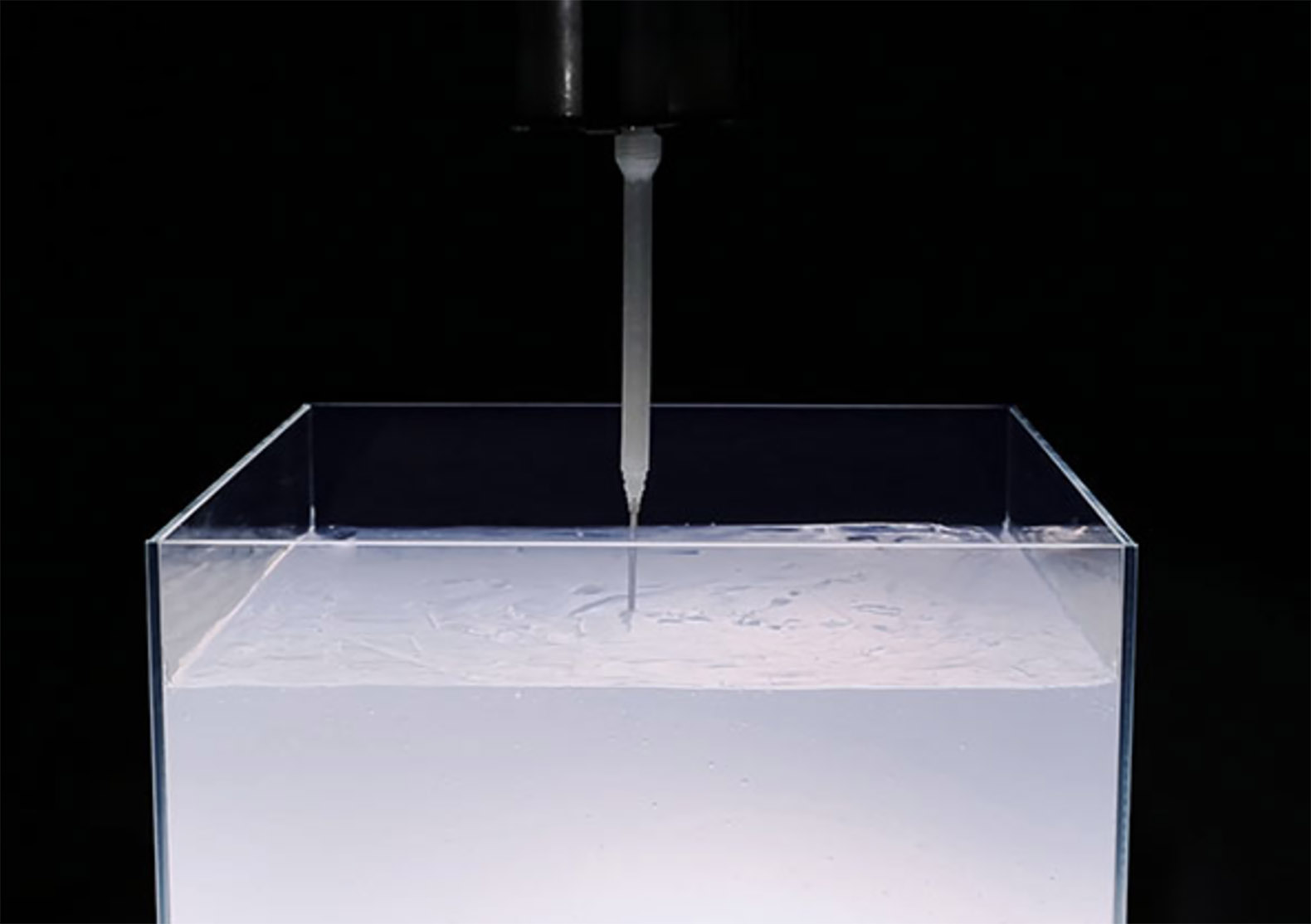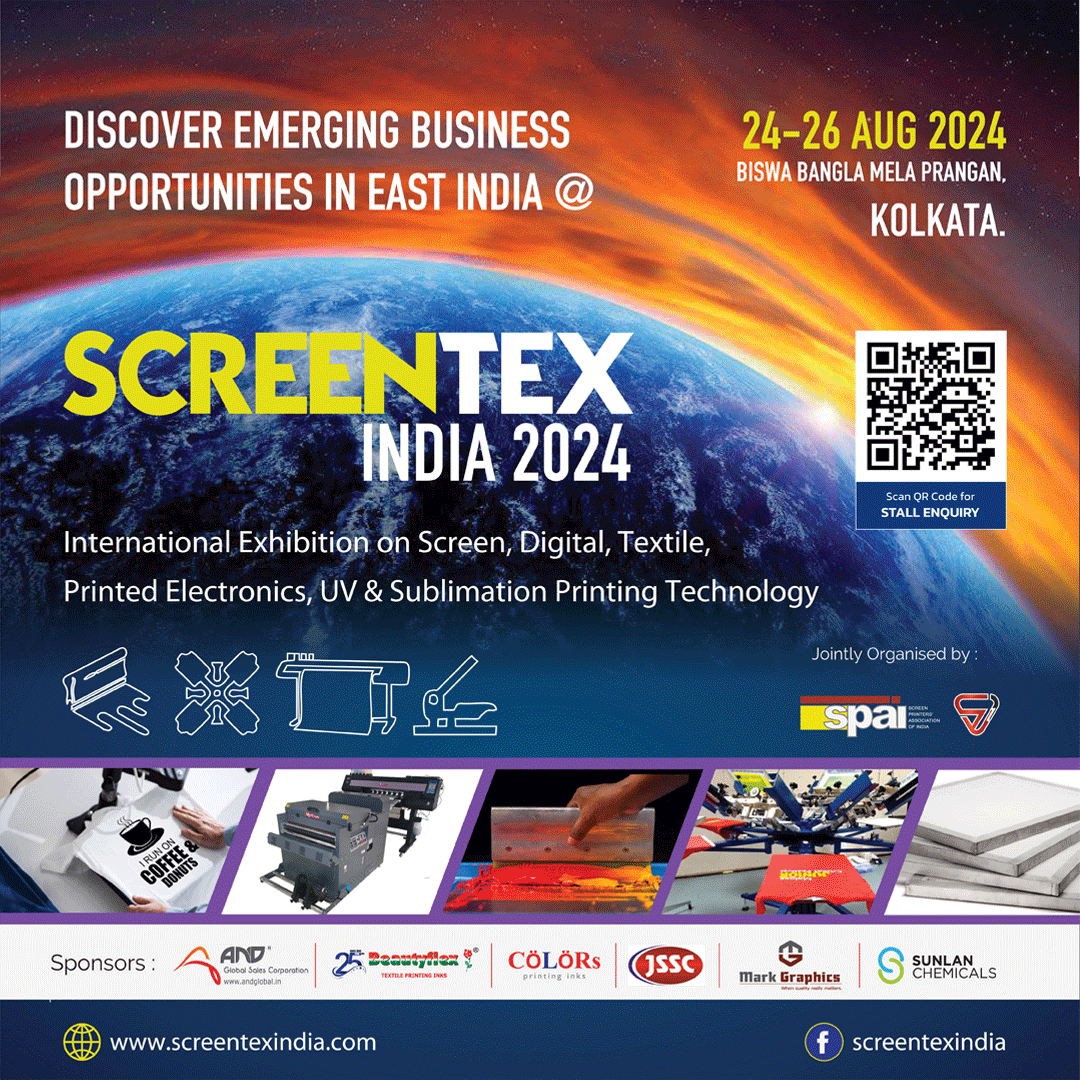Researchers at the Massachusetts Institute of Technology have developed a revolutionary new form of 3D printing that can produce large objects such as chairs in a fraction of the time of regular printers. Rapid Liquid Printing physically draws in 3D space within a gel suspension, and enables the creation of large scale, customized products made of real-world materials. Compared with other techniques we believe this is the first development to combine industrial materials with extremely fast print speeds in a precisely controlled process to yield large-scale products.
3D printing hasn’t taken off as a mainstream manufacturing process f or three main reasons: 1) it’s too slow compared to conventional processes like injection molding, casting, milling, etc. 2) it’s limited by scale – although it’s good for creating small components, it’s not possible to produce large scale objects 3) the materials are typically low-quality compared to industrial materials.
Rapid Liquid Printing addresses all of these limitations: it is incredibly fast (producing structures in a matter of minutes), designed for large scale products (you can print an entire piece of furniture) and uses real-world, industrial-grade materials.
The Self-Assembly Lab worked with US furniture company Steelcase to develop the process known as Rapid Liquid Printing, which involves extruding material from a computer-controlled nozzle into gel.
This allows them to print large-scale structures very quickly, creating a range of possibilities for furniture production. The team’s aim was to tackle the three main challenges that they believe have prevented 3D printing’s widespread adoption in manufacturing: speed, scale and material properties.
According to the team, the reason why this is better than 3D printing technology is because nearly every printing process utilises layers, and those layers degrade the structural property of the material compared to a consistent material all the way through. Rapid Liquid Printing allows the robotic aperture to draw freely in 3D space, constrained only by the size of the tank.
The gel, similar to hair gel, suspends the extruded material so it does not have to fight gravity or require a base plate to build upon. The team has experimented with a variety of printing materials, including plastics, rubbers and polyurethanes with different properties.
In each case, two materials are mixed in the nozzle and chemically cure as they are extruded. The material is pushed out like toothpaste from a tube, so has better structural integrity than if it was laid down as a series of layers – essential if it needs to bear weight.
One of the first applications of Rapid Liquid Printing was a series of furniture pieces, presented during Milan design week in April 2017. Collaborating with Swiss product designer Christophe Guberan, the team produced a set of items made from printed latticed surfaces to demonstrate the potential of the technology.
Designer Yuka Hiyoshi from Steelcase has also used the process to create a tabletop that can be made to the exact size required by the customer, as part of a collection called Bassline.
Steelcase sees the technology as an important step in developing customisable office furniture and spaces, while Tibbits believes it also has wider potential.
He thinks it could utilised in any large-scale manufacturing, including aerospace, automotive and architectural applications. Tibbits presented the project during the Being Material symposium, which was organised by MIT’s Center for Arts Science and Technology (CAST) and took place from 20 to 22 April 2017.




